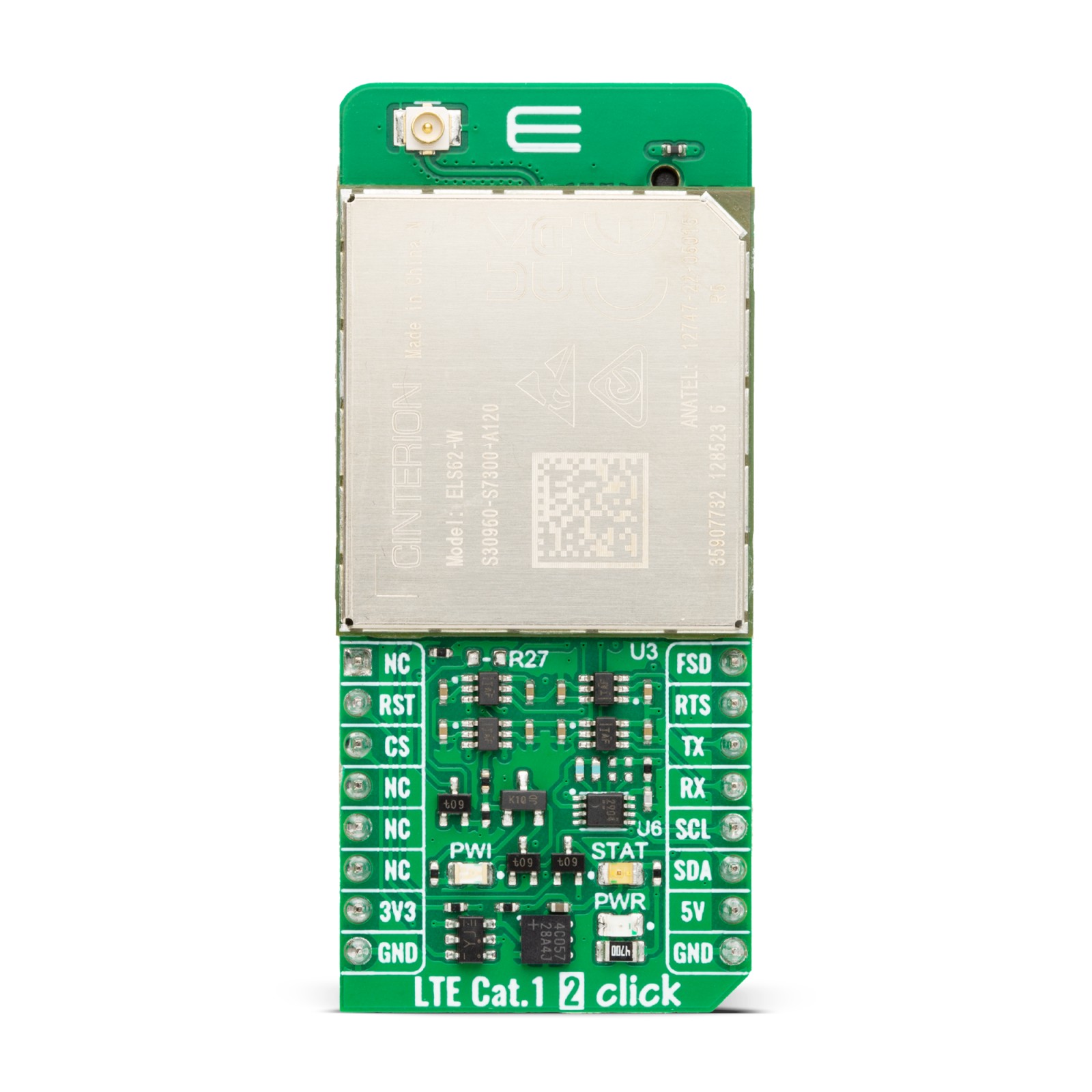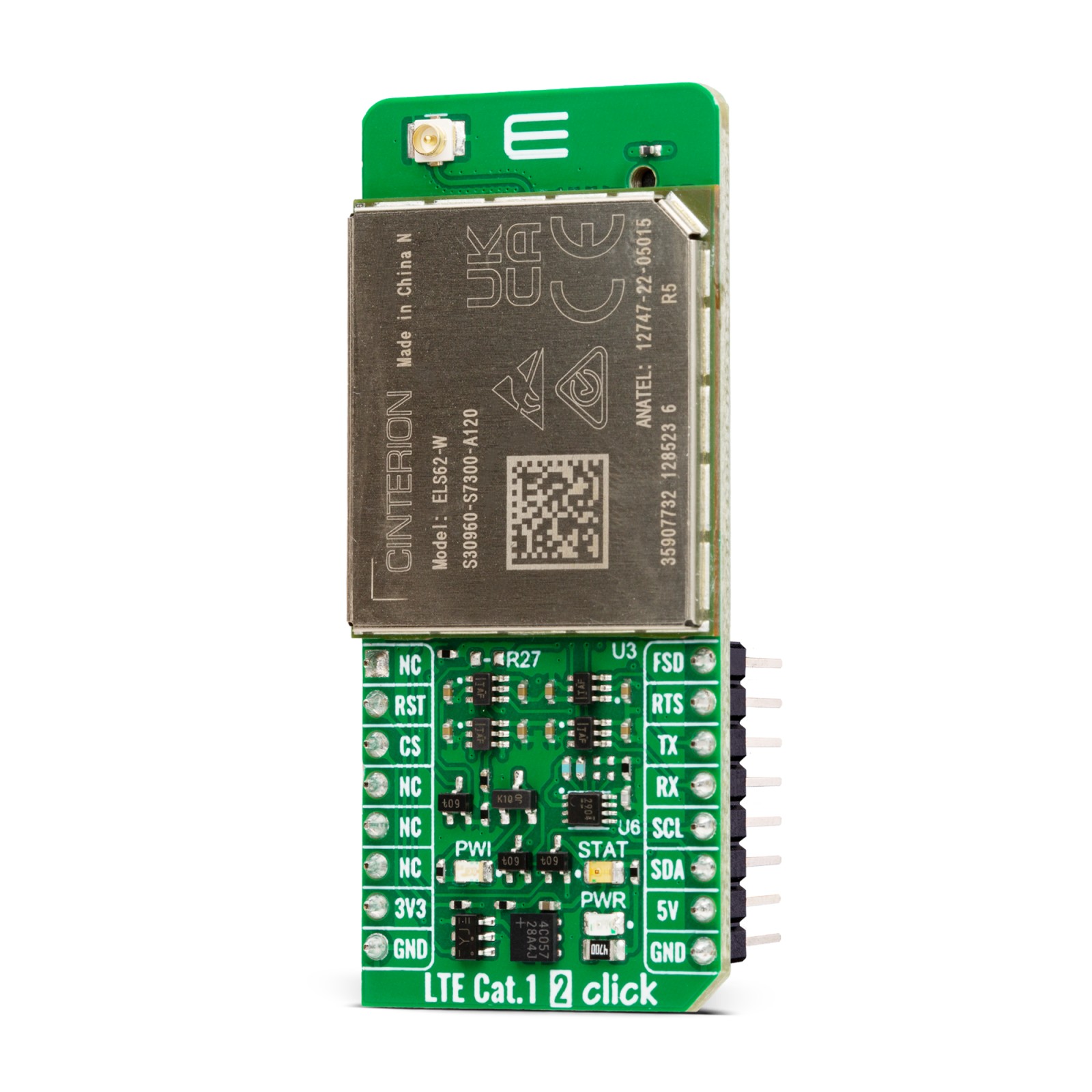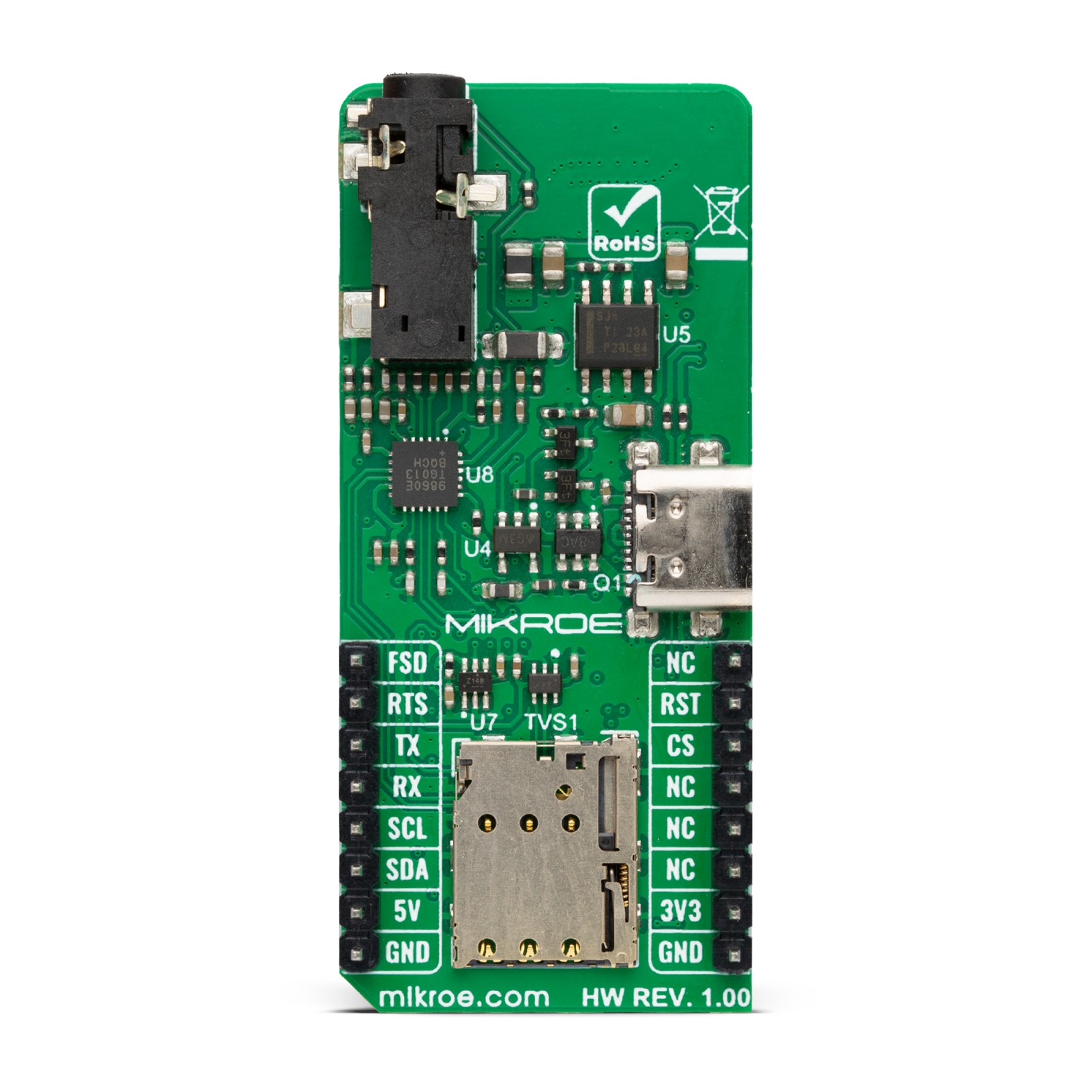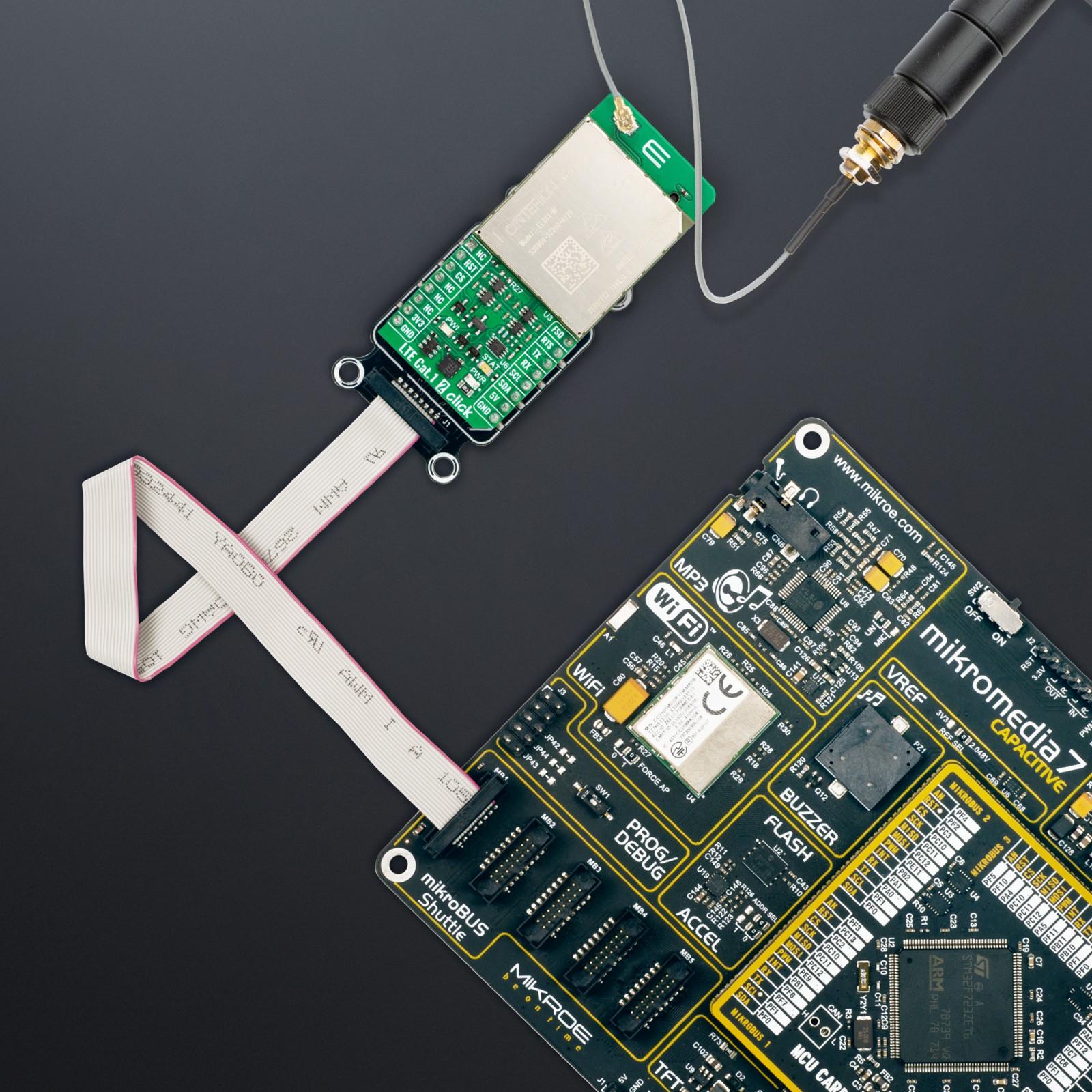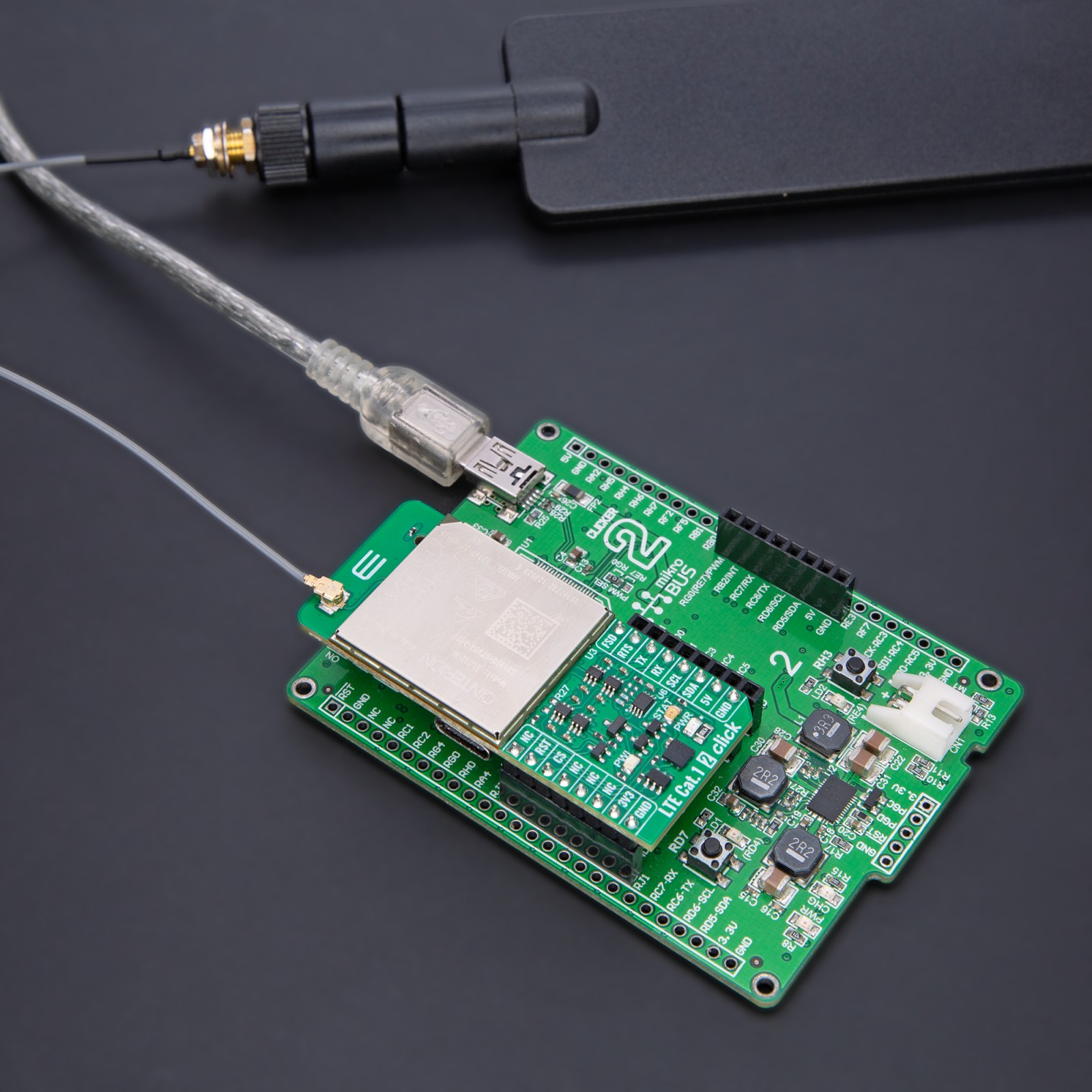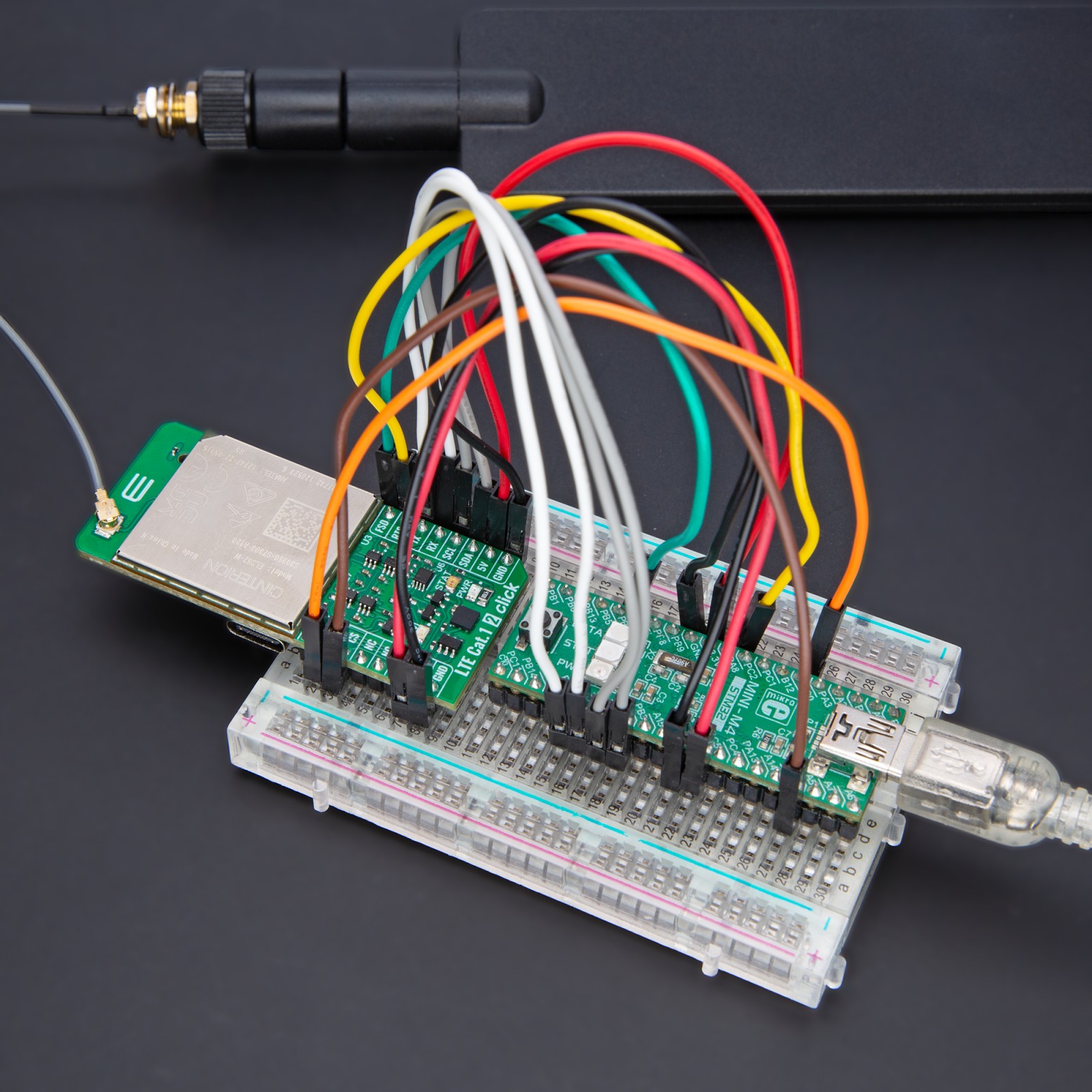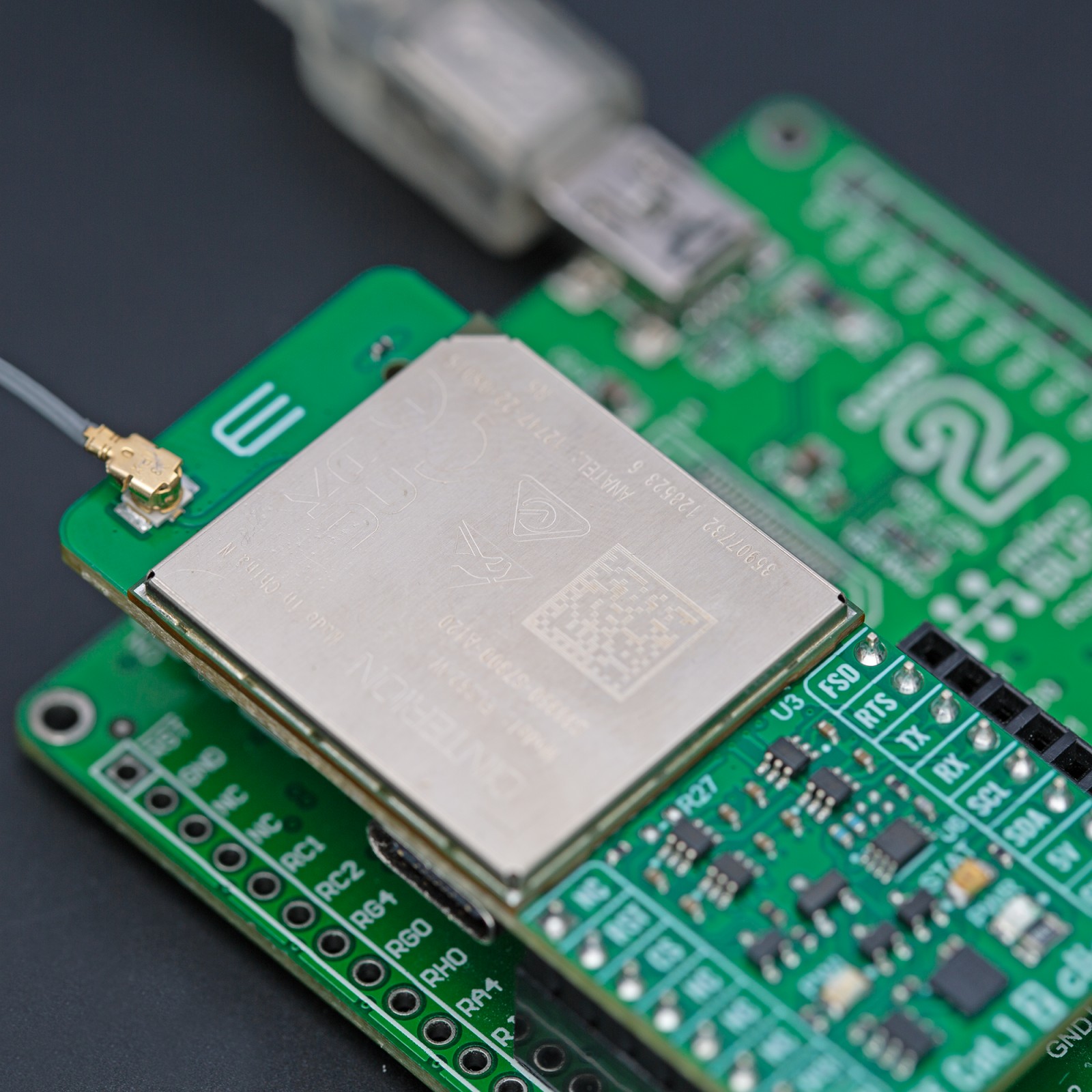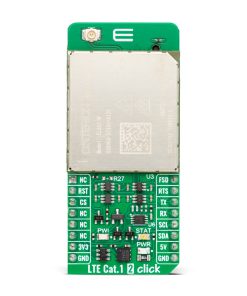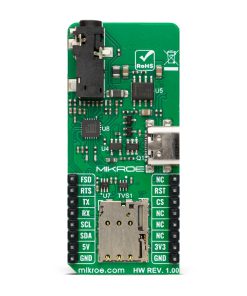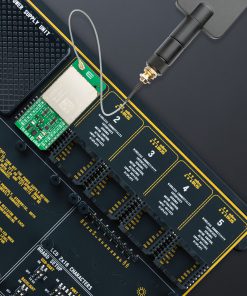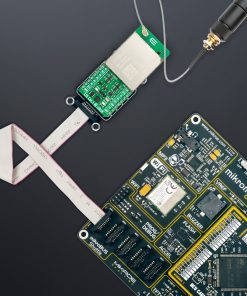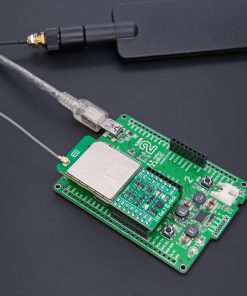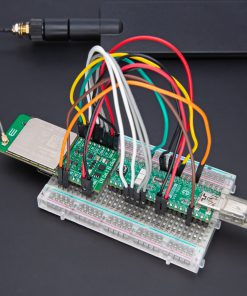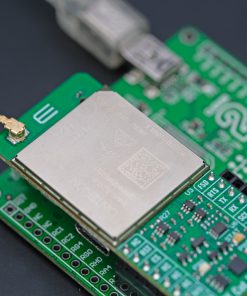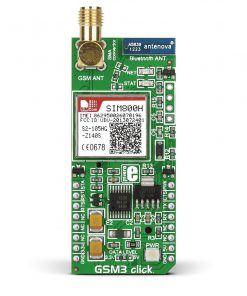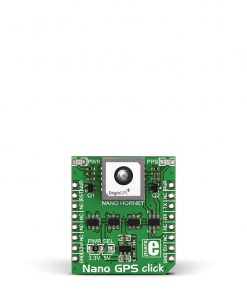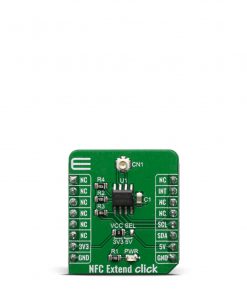LTE Cat.1 2 Click (for Europe)
R1,700.00 ex. VAT
LTE Cat.1 2 Click (EU) is a compact add-on board that provides your application with complete LTE and VoLTE with CSFB functionalities. This board features the ELS62-E, a single antenna LTE cat.1bis module from Telit Cinterion. The module offers a 3GPP Rel.13 compliant protocol, digital audio interface, dual UICC/U/SIM card interface, and more. Besides, it also has a u.Fl connector to connect an appropriate antenna, which MIKROE offers. This Click board™ makes the perfect solution for the development of communication devices, both for home and industrial applications, remote device actions, and more.
LTE Cat.1 2 Click is fully compatible with the mikroBUS™ socket and can be used on any host system supporting the mikroBUS™ standard. It comes with the mikroSDK open-source libraries, offering unparalleled flexibility for evaluation and customization. What sets this Click board™ apart is the groundbreaking ClickID feature, enabling your host system to seamlessly and automatically detect and identify this add-on board.
Stock: Lead-time applicable.
| 5+ | R1,615.00 |
| 10+ | R1,530.00 |
| 15+ | R1,445.00 |
| 20+ | R1,390.60 |

